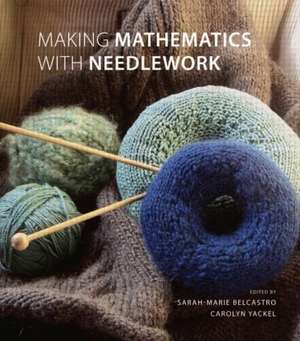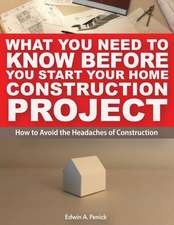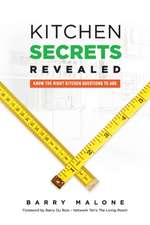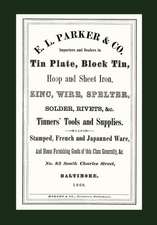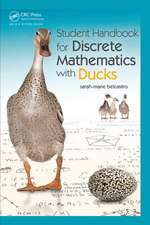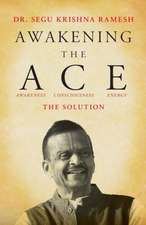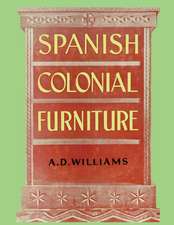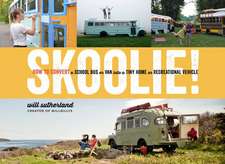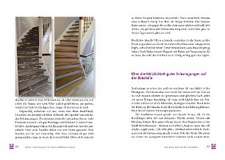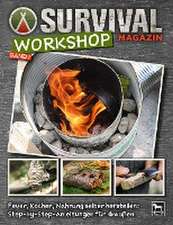Making Mathematics with Needlework: Ten Papers and Ten Projects: AK Peters/CRC Recreational Mathematics Series
Editat de sarah-marie belcastro, Carolyn Yackelen Limba Engleză Hardback – 12 dec 2007
Din seria AK Peters/CRC Recreational Mathematics Series
-
 Preț: 390.89 lei
Preț: 390.89 lei -
 Preț: 393.72 lei
Preț: 393.72 lei - 8%
 Preț: 393.15 lei
Preț: 393.15 lei -
 Preț: 292.12 lei
Preț: 292.12 lei -
 Preț: 211.03 lei
Preț: 211.03 lei -
 Preț: 191.51 lei
Preț: 191.51 lei -
 Preț: 243.16 lei
Preț: 243.16 lei -
 Preț: 360.48 lei
Preț: 360.48 lei -
 Preț: 201.47 lei
Preț: 201.47 lei - 8%
 Preț: 500.84 lei
Preț: 500.84 lei -
 Preț: 184.01 lei
Preț: 184.01 lei -
 Preț: 293.52 lei
Preț: 293.52 lei -
 Preț: 246.20 lei
Preț: 246.20 lei -
 Preț: 161.39 lei
Preț: 161.39 lei -
 Preț: 359.04 lei
Preț: 359.04 lei -
 Preț: 176.05 lei
Preț: 176.05 lei -
 Preț: 242.37 lei
Preț: 242.37 lei -
 Preț: 223.47 lei
Preț: 223.47 lei -
 Preț: 317.82 lei
Preț: 317.82 lei -
 Preț: 192.53 lei
Preț: 192.53 lei - 8%
 Preț: 474.63 lei
Preț: 474.63 lei -
 Preț: 360.58 lei
Preț: 360.58 lei -
 Preț: 232.45 lei
Preț: 232.45 lei -
 Preț: 192.32 lei
Preț: 192.32 lei -
 Preț: 282.38 lei
Preț: 282.38 lei - 9%
 Preț: 570.74 lei
Preț: 570.74 lei -
 Preț: 220.61 lei
Preț: 220.61 lei -
 Preț: 223.94 lei
Preț: 223.94 lei -
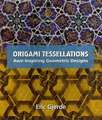 Preț: 238.17 lei
Preț: 238.17 lei -
 Preț: 191.94 lei
Preț: 191.94 lei - 8%
 Preț: 417.31 lei
Preț: 417.31 lei - 18%
 Preț: 1063.41 lei
Preț: 1063.41 lei - 26%
 Preț: 1042.56 lei
Preț: 1042.56 lei - 17%
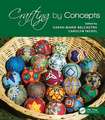 Preț: 253.55 lei
Preț: 253.55 lei - 25%
 Preț: 496.94 lei
Preț: 496.94 lei - 8%
 Preț: 502.87 lei
Preț: 502.87 lei -
 Preț: 378.60 lei
Preț: 378.60 lei - 26%
 Preț: 933.23 lei
Preț: 933.23 lei -
 Preț: 323.21 lei
Preț: 323.21 lei - 18%
 Preț: 1217.60 lei
Preț: 1217.60 lei - 18%
 Preț: 179.93 lei
Preț: 179.93 lei -
 Preț: 324.46 lei
Preț: 324.46 lei
Preț: 376.48 lei
Nou
Puncte Express: 565
Preț estimativ în valută:
72.06€ • 78.30$ • 60.57£
72.06€ • 78.30$ • 60.57£
Carte tipărită la comandă
Livrare economică 21 aprilie-05 mai
Preluare comenzi: 021 569.72.76
Specificații
ISBN-13: 9781568813318
ISBN-10: 1568813317
Pagini: 200
Ilustrații: colour illustrations
Dimensiuni: 203 x 254 x 13 mm
Greutate: 0.61 kg
Ediția:1
Editura: CRC Press
Colecția A K Peters/CRC Press
Seria AK Peters/CRC Recreational Mathematics Series
Locul publicării:United States
ISBN-10: 1568813317
Pagini: 200
Ilustrații: colour illustrations
Dimensiuni: 203 x 254 x 13 mm
Greutate: 0.61 kg
Ediția:1
Editura: CRC Press
Colecția A K Peters/CRC Press
Seria AK Peters/CRC Recreational Mathematics Series
Locul publicării:United States
Public țintă
General and Professional Practice & DevelopmentNotă biografică
sarah-marie belcastro and Carolyn Yackel earned their Ph.D.s in mathematics from the University of Michigan. Carolyn Yackel is an Associate Professor in the mathematics department at Mercer University in Macon, Georgia, specializing in connections between mathematics and art. sarah-marie belcastro is a Research Associate at Smith College in Northampton, Massachusetts.
Recenzii
The most awesome book I’ve ever seen…
I opened the book and was hooked. … One thing I found wonderful about the book is that, while I’ve had quite a bit of math, I’m not a mathematician and struggle reading math journal articles. However, I haven’t had any difficulty reading and understanding the technical sections of the projects. While the authors use mathematical notation and equations to describe the work, they keep it at a level that any scientifically literate person should be able to understand. …
—FCIWYPSC blog, January 2011
The book contains interesting pictures and photographs. Anyone interested in mathematics or needlework will find new, interesting topics and inspiration in the book.
—The European Mathematical Society, October 2011
A ‘confluence of mathematics and fiber arts’ written for mathematicians, mathematics teachers, and devotees of needlework … . Thank you for providing me the opportunity to review this excellent book.
—Margaret A. Reilly, Ph.D., Association for Women in Science, August 2010
… The color photographs are delectable, and the illustrations in color are very helpful. It makes a great coffee table book for people to flip through and then decide to explore further. … As a member of the mathematics community, I thank the two editors for building a community of mathematicians and needleworkers, and for bringing their passion in all they do into their professional lives. …
—AWM Newsletter, January 2010
…a charming book. It includes precise and detailed instructions for projects both practical and whimsical. The mathematics applied to knitting is particularly useful in the construction of knitted garments, providing simple formulae for ensuring that stitches are picked up evenly. The analysis of all possible variations in basic stocking stitch is fascinating, and the innovative ideas for the construction of knitted garments encourages further experiments in producing garments without seams.
—Australian Mathematical Society Gazette, May 2009
…demonstrate[es] how knitting and other needlework techniques can provide interesting and useful models and the construction methods themselves yield interesting mathematical questions.
—CMS Notes, November 2008
This book provides straightforward applications of traditional needlework skills to mathematically inspired craft projects. … contributes something quite innovative to the two areas it unites. More importantly, perhaps, this book will be an important starting point for scholars who want to show that the traditional activities of women require at least a tacit understanding of mathematics, and the mathematics embedded in such activities can be challenging, novel, and interesting.
—Journal of Mathematics and the Arts, October 2008
For mathematically minded readers who know about and practice the fiber arts, this is a nice source of ideas and information … almost any reader will learn about both art and mathematics in this well-organized and amply-illustrated book.
—Mathematical Reviews, August 2008
At first glance the patterns capture the reader’s attention: they are colorful, stylish, and have clear instructions. A second, slower paging through the book reveals the structural symmetry of each design, and the ‘ah, ha’ of mathematics makes its presence known … . Fiber arts enthusiasts who would like to improve their design skills will find the book useful and inspiring … . This meshing of mathematics theory and fiber arts applications is also useful for people who teach mathematics.
—The Stereopticon, August 2008
Beautifully illustrated, and with complete patterns and the mathematics behind each project, this book successfully connects the worlds of mathematics and the fiber arts … will inspire mathematicians, mathematics educators, and crafters.
—L'Enseignement Mathématique, August 2008
… an excellent synthesis, one that offers enough ideas to keep geeks (of both the crafty and mathematical varieties) busy with needles and yarn, pencil and paper, for years to come.
—American Scientist, May 2008
Profusely illustrated, the text is fully accessible to non-specialist general readers with an interest in needlecraft, in the mathematics underlying needlecraft, as well as having a very special attraction for math students and fiber art enthusiasts alike.
—The Midwest Book Review, February 2008
… I am soon charmed by the way that the laying out in mathematical terms of a process I know by heart can inspire a confident sense of knowledge.
—The London Mathematical Society, February 2008
I encourage you to let the authors’ passion for their projects speak for itself. It takes more than exclamation points to convey enthusiasm, and these authors have it leaping off the page throughout the book.
—SIAM, December 2007
This book demonstrates the interplay between mathematics and needlework, including stories of what happens when mathematicians turn to their hobbies but still continue to think about mathematics. I hope this book will encourage mathematicians to develop more tactile ways to explore abstract ideas and to make them more accessible to their students. But even if you are just looking for ‘math craft’ ideas, this book—with clear instructions and beautiful pictures—is for you. Have fun with it!
—Daina Taimina, adjunct professor of mathematics, Cornell University
… I wish this had been one of my textbooks when I was in school.
—Norah Gaughan, author of Knitting Nature
A wonderful and validating book: mathematics from your fingertips to your brain and back again!
—Helaman Ferguson, mathematical sculptor
I opened the book and was hooked. … One thing I found wonderful about the book is that, while I’ve had quite a bit of math, I’m not a mathematician and struggle reading math journal articles. However, I haven’t had any difficulty reading and understanding the technical sections of the projects. While the authors use mathematical notation and equations to describe the work, they keep it at a level that any scientifically literate person should be able to understand. …
—FCIWYPSC blog, January 2011
The book contains interesting pictures and photographs. Anyone interested in mathematics or needlework will find new, interesting topics and inspiration in the book.
—The European Mathematical Society, October 2011
A ‘confluence of mathematics and fiber arts’ written for mathematicians, mathematics teachers, and devotees of needlework … . Thank you for providing me the opportunity to review this excellent book.
—Margaret A. Reilly, Ph.D., Association for Women in Science, August 2010
… The color photographs are delectable, and the illustrations in color are very helpful. It makes a great coffee table book for people to flip through and then decide to explore further. … As a member of the mathematics community, I thank the two editors for building a community of mathematicians and needleworkers, and for bringing their passion in all they do into their professional lives. …
—AWM Newsletter, January 2010
…a charming book. It includes precise and detailed instructions for projects both practical and whimsical. The mathematics applied to knitting is particularly useful in the construction of knitted garments, providing simple formulae for ensuring that stitches are picked up evenly. The analysis of all possible variations in basic stocking stitch is fascinating, and the innovative ideas for the construction of knitted garments encourages further experiments in producing garments without seams.
—Australian Mathematical Society Gazette, May 2009
…demonstrate[es] how knitting and other needlework techniques can provide interesting and useful models and the construction methods themselves yield interesting mathematical questions.
—CMS Notes, November 2008
This book provides straightforward applications of traditional needlework skills to mathematically inspired craft projects. … contributes something quite innovative to the two areas it unites. More importantly, perhaps, this book will be an important starting point for scholars who want to show that the traditional activities of women require at least a tacit understanding of mathematics, and the mathematics embedded in such activities can be challenging, novel, and interesting.
—Journal of Mathematics and the Arts, October 2008
For mathematically minded readers who know about and practice the fiber arts, this is a nice source of ideas and information … almost any reader will learn about both art and mathematics in this well-organized and amply-illustrated book.
—Mathematical Reviews, August 2008
At first glance the patterns capture the reader’s attention: they are colorful, stylish, and have clear instructions. A second, slower paging through the book reveals the structural symmetry of each design, and the ‘ah, ha’ of mathematics makes its presence known … . Fiber arts enthusiasts who would like to improve their design skills will find the book useful and inspiring … . This meshing of mathematics theory and fiber arts applications is also useful for people who teach mathematics.
—The Stereopticon, August 2008
Beautifully illustrated, and with complete patterns and the mathematics behind each project, this book successfully connects the worlds of mathematics and the fiber arts … will inspire mathematicians, mathematics educators, and crafters.
—L'Enseignement Mathématique, August 2008
… an excellent synthesis, one that offers enough ideas to keep geeks (of both the crafty and mathematical varieties) busy with needles and yarn, pencil and paper, for years to come.
—American Scientist, May 2008
Profusely illustrated, the text is fully accessible to non-specialist general readers with an interest in needlecraft, in the mathematics underlying needlecraft, as well as having a very special attraction for math students and fiber art enthusiasts alike.
—The Midwest Book Review, February 2008
… I am soon charmed by the way that the laying out in mathematical terms of a process I know by heart can inspire a confident sense of knowledge.
—The London Mathematical Society, February 2008
I encourage you to let the authors’ passion for their projects speak for itself. It takes more than exclamation points to convey enthusiasm, and these authors have it leaping off the page throughout the book.
—SIAM, December 2007
This book demonstrates the interplay between mathematics and needlework, including stories of what happens when mathematicians turn to their hobbies but still continue to think about mathematics. I hope this book will encourage mathematicians to develop more tactile ways to explore abstract ideas and to make them more accessible to their students. But even if you are just looking for ‘math craft’ ideas, this book—with clear instructions and beautiful pictures—is for you. Have fun with it!
—Daina Taimina, adjunct professor of mathematics, Cornell University
… I wish this had been one of my textbooks when I was in school.
—Norah Gaughan, author of Knitting Nature
A wonderful and validating book: mathematics from your fingertips to your brain and back again!
—Helaman Ferguson, mathematical sculptor
Cuprins
Acknowledgments, Introduction: An Overview of Mathematics and Fiber Arts, 1 Quilted Mobius Band, 2 Picking Up Stitches and Diophantine Equations, 3 The Sierpinski Variations: Self-Similar Crochet, 4 Only Two Knit Stitches Can Create a Torus, 5 Symmetry Patterns in Cross-Stitch, 6 Socks with Algebraic Structure, 7 Fortunatus’s Purse, 8 (K)Not Cables, Braids, 9 The Graph Theory of Blackwork Embroidery, 10 Stop Those Pants!, About the Contributors, Credits, Index
Descriere
Mathematical craftwork has become extremely popular, and mathematicians and crafters alike are fascinated by the relationship between their crafts. The focus of this book, written for mathematicians, needleworkers, and teachers of mathematics, is on the relationship between mathematics and the fiber arts (including knitting, crocheting, cross-stitch, and quilting). Each chapter starts with an overview of the mathematics and the needlework at a level understandable to both mathematicians and needleworkers, followed by more technical sections discussing the mathematics, how to introduce the mathematics in the classroom through needlework, and how to make the needlework project, including patterns and instructions.
